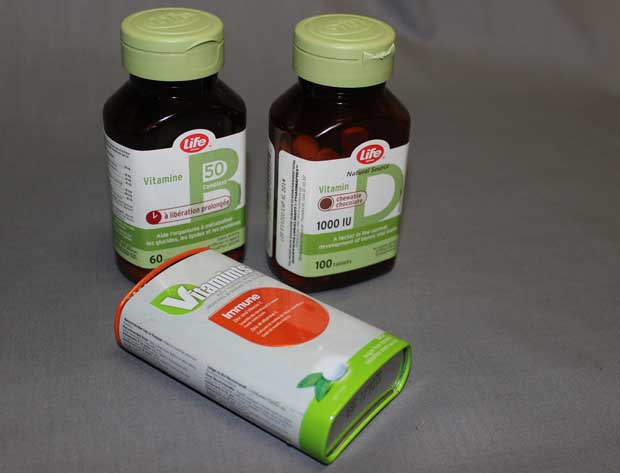
BELLEVILLE, Ont.– HEALTH – An acquaintance of mine in his late 70s recently told a group that he had just been hospitalized with pneumonia for five days. The local hospital system, he said, was completely gridlocked, jammed to the rafters with people like him. No rooms were available and patients were in the corridors.
Some of his listeners, keenly aware of a local initiative to construct a new hospital, responded, “This just proves how much we need the new hospital!”
But as a longtime student of nutrition, my reaction was, “This just proves how deficient Canadians are in vitamin D!” It also revealed how unaware most Canadians are of this crucial vitamin.
There’s abundant scientific research linking low vitamin D levels to an increased incidence and severity of pneumonia. Credible studies also show that large numbers of Canadians lack adequate vitamin D for optimal health, particularly during the winter when they get no sunshine.
How much does it cost to supplement with vitamin D3, the active form? I take 5,000 IU per day – far more than the recommended daily allowance, but an amount that science suggests will protect from colds, flu, pneumonia and similar viral infections. It seems to works for me – I’m virtually never sick. It costs about 15 cents per day for a high-quality brand, or $27 for half a year’s worth.
How much does it cost to hospitalize one Ontario patient for five days? Estimates vary, but one low-end estimate for general ward treatment is $1,724 per day, or $8,720 for my acquaintance’s five-day bout of pneumonia.
A decade ago, the Ontario Health Insurance Plan (OHIP) covered the cost of vitamin D testing. I had it done twice. My 2007 test came back low, so I started supplementing. My 2009 test showed that the supplements had worked. But when I asked for a third test in 2012, just as a precaution, I was told that it was no longer covered by OHIP; I would have to pay for it myself. (I did, at a cost of about $40, and remained satisfied with my supplements.)
But why was OHIP no longer paying for the test? Had too many people wised up and started requesting it?
Precisely. An online Ontario government document shows that OHIP paid for only 29,000 such tests in 2004, but more than 700,000 in 2009, a 24-fold increase. The Ministry of Health therefore decided that after 2010, the test would be covered only for those who had been diagnosed with a clear deficiency disease such as osteoporosis or rickets.
Did it never occur to anyone that testing people before such conditions developed might actually prevent them from developing?
Apparently, Ontario would rather spend $8,700 to hospitalize a citizen than $40 to test him for vitamin D insufficiency. And citizens seem unaware that $27 worth of vitamin D supplements per winter might save them from the ordeal of five days in hospital. plus the tax burden of helping to pay for their stay.
Penny wise and pound foolish – Ontario’s health care system in a nutshell.
Karen Selick is a lawyer and writer in Ontario.
© 2017 Distributed by Troy Media
The views, opinions and positions expressed by all columnists and contributors are the author’s alone. They do not inherently or expressly reflect the views, opinions and/or positions of NetNewsLedger.com.

